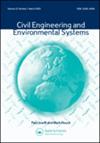Towards optimised decisions for resource and carbon-efficient structural design
IF 1.1
3区 工程技术
Q3 ENGINEERING, CIVIL
引用次数: 1
Abstract
ABSTRACT Engineering structures consume a significant fraction of resources and contribute to greenhouse gas emissions worldwide. A conducted literature review shows that most existing approaches to improve the environmental performance of structures concern the adoption of decisions during the conceptual design stage (e.g. on the choice of material), often in connection with life cycle assessment. However, approaches for addressing environmental objectives in practice are often hampered by economic interests pursuing short-term profit. Moreover, such approaches are rather descriptive and lack criteria for assessing the acceptability of specific solutions. Sustainable development of our built environment requires hence a shift of paradigm on how engineering structures are designed. In this paper it is claimed that this should be approached at the strategical level of structural design codes, which contain the rules that support everyday engineering decisions in regard to structural safety and functionality. The paper discusses the reasons why these rules as conceived do not foster an optimal use of materials and explores possibilities for savings of resources and greenhouse gas emissions through modifications of these rules. The potential of risk-informed decision approaches in this context is highlighted and illustrated by a case study – the design of steel beams in building structures.朝向资源和碳效率结构设计的优化决策
工程结构消耗了很大一部分资源,并造成了全球温室气体排放。进行的文献审查表明,改善结构环境性能的大多数现有方法涉及在概念设计阶段(例如材料的选择)采用决策,通常与生命周期评估有关。然而,在实践中实现环境目标的方法往往受到追求短期利润的经济利益的阻碍。此外,这种方法是描述性的,缺乏评估具体解决办法可接受性的标准。因此,建筑环境的可持续发展要求工程结构的设计范式发生转变。在本文中,它声称这应该在结构设计规范的战略层面上进行处理,其中包含支持日常工程决策的规则,涉及结构安全和功能。本文讨论了这些规则不能促进材料的最佳利用的原因,并探讨了通过修改这些规则节省资源和温室气体排放的可能性。在这种情况下,风险知情决策方法的潜力被一个案例研究——建筑结构中钢梁的设计——所强调和说明。
本文章由计算机程序翻译,如有差异,请以英文原文为准。
求助全文
约1分钟内获得全文
求助全文
来源期刊

Civil Engineering and Environmental Systems
工程技术-工程:土木
CiteScore
3.30
自引率
16.70%
发文量
10
审稿时长
>12 weeks
期刊介绍:
Civil Engineering and Environmental Systems is devoted to the advancement of systems thinking and systems techniques throughout systems engineering, environmental engineering decision-making, and engineering management. We do this by publishing the practical applications and developments of "hard" and "soft" systems techniques and thinking.
Submissions that allow for better analysis of civil engineering and environmental systems might look at:
-Civil Engineering optimization
-Risk assessment in engineering
-Civil engineering decision analysis
-System identification in engineering
-Civil engineering numerical simulation
-Uncertainty modelling in engineering
-Qualitative modelling of complex engineering systems
 求助内容:
求助内容: 应助结果提醒方式:
应助结果提醒方式:


